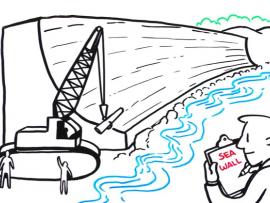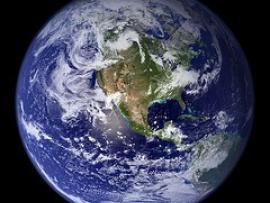Browse Water Cycle Resources
Browse Water Cycle Resources
Primary Topic:
Subtopics:
Type:
Summary:
In this IQuest, you will explore resources to help you learn about the Sentinel-6 Michael Freilich satellite, the science behind sea level rise, and the STEM related careers of several of the scientists and engineers involved with this effort.
Primary Topic:
Subtopics:
Type:
Keywords:
Summary:
This My NASA Data lesson plan takes students through data from the GRACE satellite mission to help them understand where regions around the globe may experience a change in their freshwater availability.
Primary Topic:
Type:
Summary:
This interactive lesson uses a blow-up globe and a kinesthetic activity to help participants gain an understanding of how much water is on Earth’s surface.
Primary Topic:
Subtopics:
Type:
Summary:
This interactive lesson will allow you to explore Earth’s freshwater resources. You will learn how NASA's Global Precipitation Measurement mission is helping us better understand our most valuable natural resource.
Primary Topic:
Subtopics:
Type:
Standards:
Keywords:
Summary:
The water cycle may seem simple on the surface, but there are many different ways to move through the process. This page has a few different versions of a Water Cycle Dice game to teach students about the complexities of water in Earth's system.
Primary Topic:
Subtopics:
Type:
Standards:
Keywords:
Summary:
GPM Project Scientist Gail Skofronick-Jackson explains why all snowflakes have six sides and how the Global Precipitation Measurement Mission can measure falling snow from space.
Primary Topic:
Subtopics:
Type:
Summary:
An educational brochure which explores the importance of fresh water to life on Earth and how NASA is monitoring and studying precipitation using satellites like GPM.
Primary Topic:
Subtopics:
Type:
Standards:
Keywords:
Summary:
This video explains why the size and shape of raindrops in a cloud matters to scientists, and how the Global Precipitation Measurement Mission is able to provide these measurements from space.
Primary Topic:
Subtopics:
Type:
Keywords:
Summary:
This lesson uses cubes as a way to graph precipitation data to compare the precipitation averages and seasonal patterns for several different locations. There are several variations to accommodate various ages and ability levels.
Primary Topic:
Subtopics:
Type:
Keywords:
Summary:
In this program, GPM mission scientists and education specialists talk about watersheds and related educational resources.










